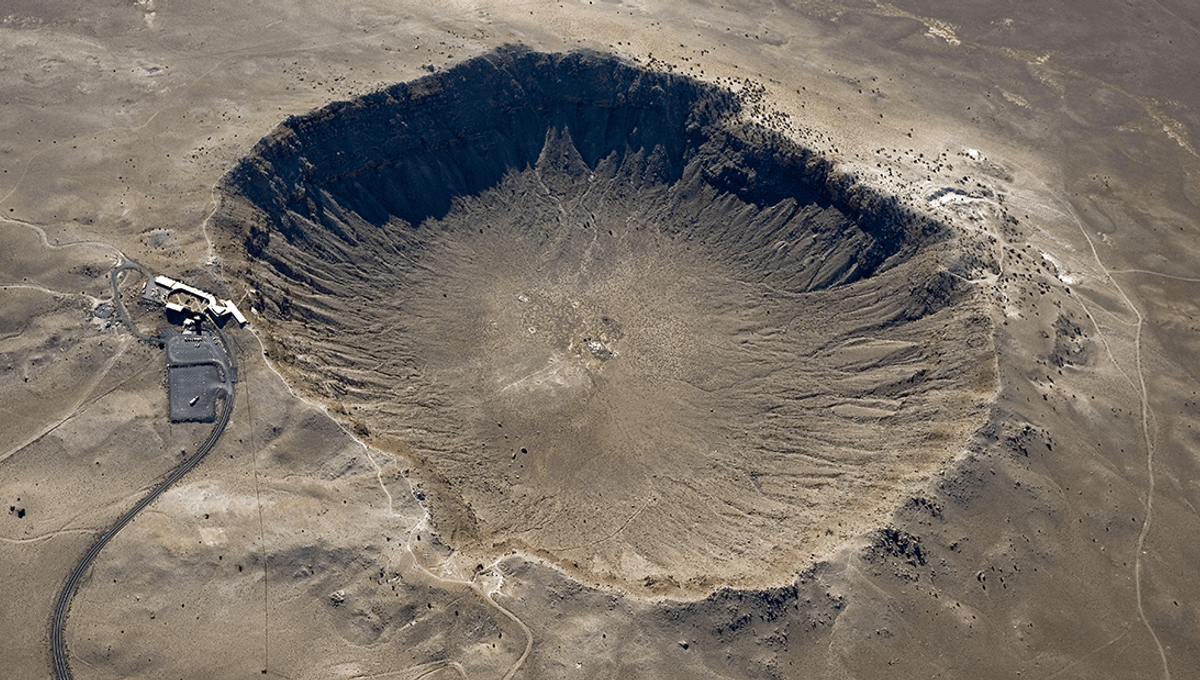
When carbon is subjected to extreme heat and pressure within the Earth, it can crystalize to form diamonds; the hardest (though not necessarily the toughest) natural mineral on the planet.
ADVERTISEMENT GO AD FREE
But it turns out that there is more than one way to make a diamond. In 1891, examining a meteorite in Canyon Diablo, Arizona, scientists reported finding “hard particles” within it. Later, in 1939, these hard particles were confirmed to be a mixture of diamonds, graphite, and a new substance that had never been seen before, now called lonsdaleite after crystallographer Professor Dame Kathleen Lonsdale.
At first, scientists had expected the unusual material to be diamond with a hexagonal structure, rather than the classic cubic diamonds we are used to. Studying samples of the meteorite in 2022, however, a team found that they were instead composed of nanostructured diamonds with graphene-like growths in between. The sample was technically a diaphite, where two minerals grow at the same time, resulting in a less-ordered crystal structure full of stacking “errors”.
Asteroids and comets are not high-pressure or hot objects. So how do diamonds, and lonsdaleite, end up inside of them? When meteorites impact the Earth, they can do so with such force that they create the materials as they strike.
“Evidence suggests these ‘diamonds’ formed by shock compression of the initial graphite,” the team wrote in their paper. “It was noted from Raman spectroscopy that a few areas within some grains exhibited the characteristic sharp peak of crystalline cubic diamond, indicating that these had achieved sufficiently high temperature during the shock event to complete the thermodynamic transformation.”
Diamond and lonsdaleite may also be formed in space, making them true space diamonds. This happens when objects in space collide. Another team in 2022 put formation down to an ancient collision between a large asteroid and a dwarf planet.
ADVERTISEMENT GO AD FREE
“There’s strong evidence that there’s a newly discovered formation process for the lonsdaleite and regular diamond, which is like a supercritical chemical vapour deposition process that has taken place in these space rocks, probably in the dwarf planet shortly after a catastrophic collision,” Professor Dougal McCulloch, Director of the RMIT Microscopy and Microanalysis Facility, explained in a statement at the time.
“Chemical vapour deposition is one of the ways that people make diamonds in the lab, essentially by growing them in a specialised chamber.”
That team suggests that the lonsdaleite formed from a supercritical fluid within the meteorite, which preserved the structure of the pre-existing graphite within. Later, as the material cooled, part of the lonsdaleite was replaced by diamond.
Lonsdaleite, as well as being a cool thing to find in a meteorite, is thought to withstand 58 percent more stress than diamonds. As well as this, it could have other properties that would make it very useful if we can create it in sufficient quantities in the lab.
ADVERTISEMENT GO AD FREE
“In addition to the remarkable mechanical properties combining aspects of the extreme compressive strength and tensile resistance of diamond and graphitic intergrowths and nanocomposites, we expect these materials to display desirable electronic properties,” the first team explained in their paper.
“The existence of diaphite structures with a conducting interface between the graphene and diamond layers provide another mechanism for introducing potentially superconducting pathways into the otherwise insulating material.”
The new kind of diamond, formed in nature by impact rather than extreme heat and pressure inside the Earth, could have applications in electronics as well as conductors.
Source Link: Asteroids Can Strike Earth With Such Force They Form A Material Harder Than Diamond